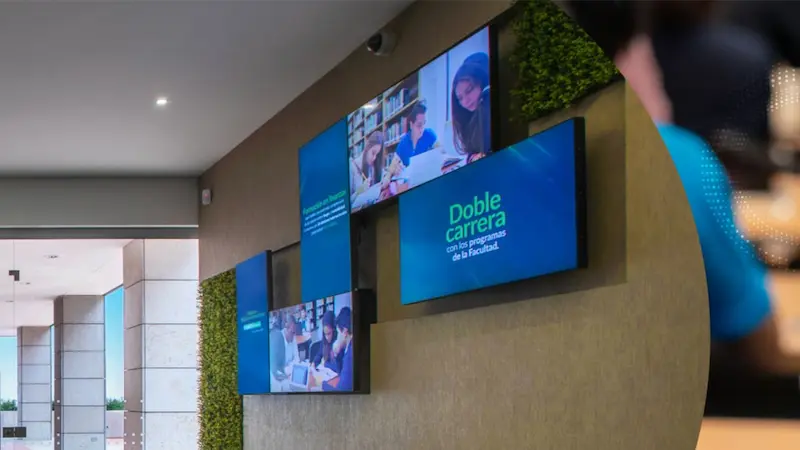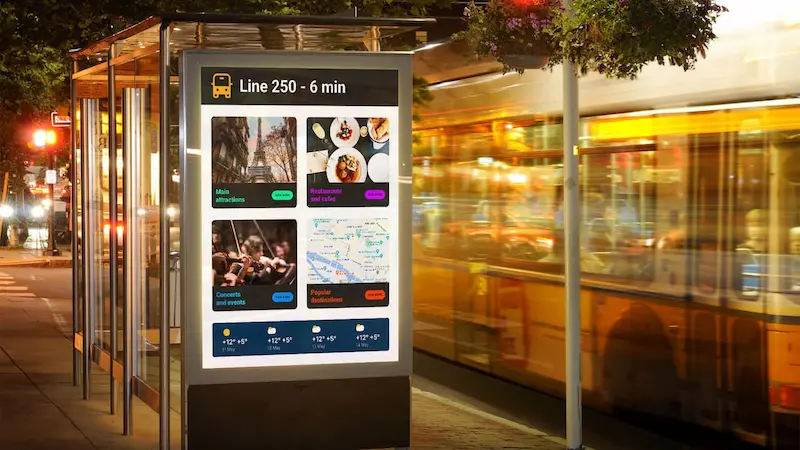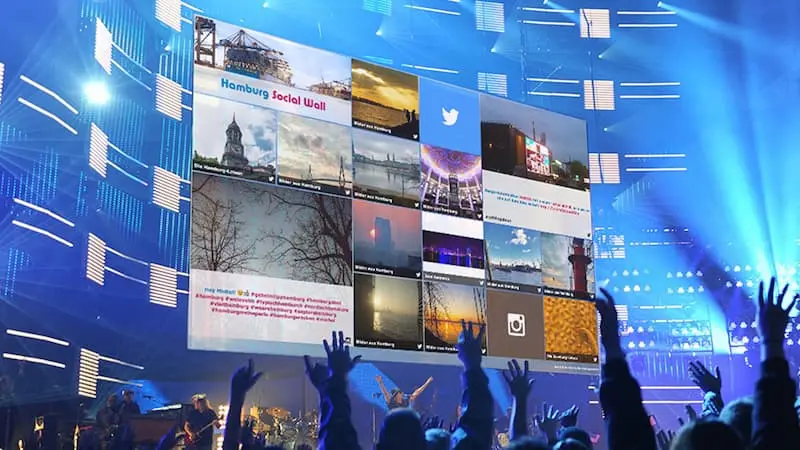
Table of Content
Out-of-home (OOH) advertising is among the oldest and most established advertising platforms. When people think of it, they visualize the iconic billboards in Times Square. However, with technological advancements, OOH has become more than billboards. This piece explains the benefits and trends of OOH advertising.
What is out-of-home advertising?
OOH advertising is a form of advertising that involves displaying promotional messaging in public places, targeting a wide audience outside their homes. It includes billboards, bus shelters, digital signage, transit advertising, and street furniture displays. These advertising formats often feature memorable slogans, eye-catching visuals, and concise messages to provide important information to the target audience and leave a lasting impression. If you come across an ad outside of your home, then you have encountered an OOH ad. This type of advertising aims to capture people’s attention while shopping, commuting, or engaging in outdoor activities.
Key benefits of OOH advertising

OOH is the oldest and most widely embraced form of advertising. Below are some of its strengths.
1. Affordable brand awareness
OOH is one of the most cost-effective marketing strategies to enable you to reach a wider audience and build brand awareness. When evaluating the Cost Per Impression (CPM) of OOH advertising compared to online brand awareness campaigns and radio ads, it is evident that OOH is the most cost-effective option. Although some types of OOH, such as billboards, can be costly, they offer a huge potential value to organizations if leveraged correctly.
2. OOH is accessible to everyone
In the past, businesses had to establish direct and personalized connections with OOH media owners to get the desired advertising space at a reasonable price. With OOH buying platforms and tools that provide real-time inventory and historical performance data, you can access the information you need to identify the placements that will offer the best return on your advertising expenditure.
3. OOH is easy to execute

OOH campaigns are relatively straightforward to implement. Once you have identified your desired location and advertising formats, you can collaborate with OOH media owners to secure advertising spaces. Additionally, OOH does not require active user engagement making it easier to convey your message to a wider audience effortlessly, even those who may not be actively engaging with the advertising content.
4. OOH is data-driven
OOH has evolved from a traditional medium to a more dynamic and targeted advertising platform. Technology and data analytics advancements allow you to leverage various data sources to optimize your OOH campaigns and make data-driven decisions. This data can provide valuable insights into traffic flow in various locations, audience demographics, and behavior patterns, which can help you strategically plan and deploy your OOH campaigns in high-traffic areas.
Trends In The OOH Advertising Industry
OOH advertising has undergone a tremendous transformation from its traditional form. You are in the right place if you seek to stay updated with the most recent trends in this marketing domain.
Mobile Integration

This trend involves seamlessly integrating mobile technology and OOH campaigns to provide customers with a more interactive and immersive experience. This technological advancement allows you to incorporate near-field communication and QR codes in your OOH campaigns to encourage viewers to interact with the content on their mobile devices. This bridges the gap between the digital and physical worlds, enhancing the impact of your campaigns. For instance, a viewer can scan the QR code on the billboard to interact with the content on a more personal level or receive exclusive offers.
Multi-Channel Integration
In 2023, businesses are striving to integrate their outdoor advertisements with television, experiential marketing, and social media to provide consumers with a cohesive and engaging brand experience. This integration allows you to extend the reach and impact of your OOH campaigns by leveraging the strengths of different channels. For instance, you can synchronize your OOH ads with social media platforms to amplify your message and engage the target audience through complementary content.
Data-driven targeting
The availability of robust data sources and advancements in data analytics allows you to leverage data-driven approaches to optimize your OOH campaigns and improve targeting precision. Data-driven targeting involves analyzing audience data to gain consumer insights and understand behavior patterns which can help you tailor your OOH messaging accordingly. This can increase the chances of capturing and retaining the target audience's attention.
Skyvertising

The advancement in drone technology allows businesses to conduct light shows and image projections at sporting events, conferences, and concerts to reach a wider audience. These light shows have light designs capable of attracting attention and impressing the target audience.
Advantages of DOOH compared to OOH
DOOH is shaping the advertisement industry. The present and future of OOH ads are digital.
Real-time Updates
Unlike conventional OOH advertising, which requires manual processes to update the content, DOOH allows you to modify your campaigns instantly to ensure your message remains relevant and timely. This feature lets you respond quickly to changing circumstances, including current events, time of day, and weather conditions, ensuring your campaigns are fresh and adaptable.
Enhanced visibility and attention
DOOH’s dynamic nature allows you to showcase visually appealing content like animations, interactive elements and videos. Unlike OOH's static nature, DOOH's movement and interactivity draw the viewer's gaze, making the advertisement more memorable. Additionally, DOOH tends to stand out and capture attention, unlike OOH, which may blend into the background, making it difficult to notice.
Content Variety
Unlike conventional OOH ads, DOOH allows businesses to display diverse and dynamic content formats, including videos and animations. Additionally, DOOH can incorporate social media integration and live feeds, making the campaigns more relevant and interactive. The ability to display diverse content opens up endless creative possibilities for businesses.
The future of OOH advertising
The future of OOH advertising is expected to be a dynamic and technologically advanced landscape driven by innovations such as digital screens, data analytics, artificial intelligence, and interactive experiences. OOH will continue to evolve, leveraging real-time data and advanced targeting capabilities to deliver personalized, contextually relevant messages to audiences. The future of OOH lies in its ability to seamlessly integrate the physical and digital realms, providing businesses with powerful tools to capture attention, enhance customer engagement, and build brand awareness in an increasingly connected and tech-driven society.







